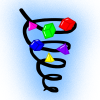Result of a shape cast test.
More...
#include <ShapeCast.h>
|
| JPH_OVERRIDE_NEW_DELETE | ShapeCastResult ()=default |
| | Default constructor. More...
|
| |
| | ShapeCastResult (float inFraction, Vec3Arg inContactPoint1, Vec3Arg inContactPoint2, Vec3Arg inContactNormalOrPenetrationDepth, bool inBackFaceHit, const SubShapeID &inSubShapeID1, const SubShapeID &inSubShapeID2, const BodyID &inBodyID2) |
| |
| float | GetEarlyOutFraction () const |
| | Function required by the CollisionCollector. A smaller fraction is considered to be a 'better hit'. For rays/cast shapes we can just use the collision fraction. The fraction and penetration depth are combined in such a way that deeper hits at fraction 0 go first. More...
|
| |
| ShapeCastResult | Reversed (Vec3Arg inWorldSpaceCastDirection) const |
| |
| JPH_OVERRIDE_NEW_DELETE | CollideShapeResult ()=default |
| | Default constructor. More...
|
| |
| | CollideShapeResult (Vec3Arg inContactPointOn1, Vec3Arg inContactPointOn2, Vec3Arg inPenetrationAxis, float inPenetrationDepth, const SubShapeID &inSubShapeID1, const SubShapeID &inSubShapeID2, const BodyID &inBodyID2) |
| | Constructor. More...
|
| |
| float | GetEarlyOutFraction () const |
| | Function required by the CollisionCollector. A smaller fraction is considered to be a 'better hit'. We use -penetration depth to get the hit with the biggest penetration depth. More...
|
| |
| CollideShapeResult | Reversed () const |
| | Reverses the hit result, swapping contact point 1 with contact point 2 etc. More...
|
| |
Result of a shape cast test.
◆ ShapeCastResult() [1/2]
◆ ShapeCastResult() [2/2]
| ShapeCastResult::ShapeCastResult |
( |
float |
inFraction, |
|
|
Vec3Arg |
inContactPoint1, |
|
|
Vec3Arg |
inContactPoint2, |
|
|
Vec3Arg |
inContactNormalOrPenetrationDepth, |
|
|
bool |
inBackFaceHit, |
|
|
const SubShapeID & |
inSubShapeID1, |
|
|
const SubShapeID & |
inSubShapeID2, |
|
|
const BodyID & |
inBodyID2 |
|
) |
| |
|
inline |
Constructor
- Parameters
-
| inFraction | Fraction at which the cast hit |
| inContactPoint1 | Contact point on shape 1 |
| inContactPoint2 | Contact point on shape 2 |
| inContactNormalOrPenetrationDepth | Contact normal pointing from shape 1 to 2 or penetration depth vector when the objects are penetrating (also from 1 to 2) |
| inBackFaceHit | If this hit was a back face hit |
| inSubShapeID1 | Sub shape id for shape 1 |
| inSubShapeID2 | Sub shape id for shape 2 |
| inBodyID2 | BodyID that was hit |
◆ GetEarlyOutFraction()
| float ShapeCastResult::GetEarlyOutFraction |
( |
| ) |
const |
|
inline |
Function required by the CollisionCollector. A smaller fraction is considered to be a 'better hit'. For rays/cast shapes we can just use the collision fraction. The fraction and penetration depth are combined in such a way that deeper hits at fraction 0 go first.
◆ Reversed()
Reverses the hit result, swapping contact point 1 with contact point 2 etc.
- Parameters
-
| inWorldSpaceCastDirection | Direction of the shape cast in world space |
◆ mFraction
| float ShapeCastResult::mFraction |
This is the fraction where the shape hit the other shape: CenterOfMassOnHit = Start + value * (End - Start)
◆ mIsBackFaceHit
| bool ShapeCastResult::mIsBackFaceHit |
True if the shape was hit from the back side.
The documentation for this class was generated from the following file:



 Public Member Functions inherited from CollideShapeResult
Public Member Functions inherited from CollideShapeResult Public Attributes inherited from CollideShapeResult
Public Attributes inherited from CollideShapeResult Public Types inherited from CollideShapeResult
Public Types inherited from CollideShapeResult